 Your new post is loading...
 Your new post is loading...
"We all understand the value of a solid and well-considered strategy. But sometimes it can be hard to know where to start when it comes to planning for a change programme, an upcoming campaign or a new project, particularly at times like these when brains feel overburdened and workloads are even more weighty than usual." Read the full article to find out more about these three structures: - The ARROW framework
- The narrative framework
- The message palette
Comms planning. It’s never been more important to get this right. So, an all-new downloadable comms planning guide has been launched to help you. by Darren Caveney You're 10 steps away from success! Access the article to find the links to the following free comms planning guide:
"Employees need two-way communication to work hard, work smart, and drive business results. Right now, however, it’s common for leadership to lay out goals for the organization with little intel from the people on the ground. Behera said this only perpetuates high-intensity work environments. The resulting pressure cooker culture prompts people to give the perception that they’re working harder, which they are, but they have less time to prioritize and think strategically about what will make an impact. The result is a burnt out worker" Read the full article to find out more about why a two-pronged system of communication can prevent that kind of downward spiral.
"As an internal communicator a crucial part of your role is likely to be supporting and guiding a colleague through a comms challenge. They want your insight and expertise. That’s why they’ve asked for your input, isn’t it?
So when someone approaches you, how do you guide them through the ever-evolving world of comms? What do you get them to think about? And what is the opportunity for you personally and the comms team?"
Read the full article to find out more about these tips grouped by: - Shaping how comms can help
- Input from our network
- Other useful thoughts/tips/best practice ideas
"What if you’ve been given the job of creating an internal communications strategy for an organisation, but the organisation hasn’t actually articulated what it wants to achieve?
There’s no business strategy, no business plan, no articulation of its
strategic direction at all."
Read the full article to find out more about how to use these two tips of information to start things moving: - find out where the money is being spent, and why
- align your employee communications to the objectives of that investment.
"We are often asked to help organisations think through their internal communication function. The question sooner or later gets back to the question of where they add the most value and whether it is enough to be a great writer or organiser.
Research that I did with Sue Dewhurst in the past highlighted the fact that whilst a good communicator needs certain basic skills, they are just that – basic. In order to have an impact, professional communicators need to do much more.
To illustrate this point I have developed the internal communication value chain. The idea is quite simple. Whilst each individual step in the process is important, it is only when you have thought about the whole end-to-end value chain can you decide where best to focus your effort.
Naturally, every organisation is different. Where you add the most value will reflect your industry, your history, the maturity of the communication awareness of leaders or the issues which you face."
Read the full article to find out more about these components of the communications value chain: - Understanding audiences and providing intelligence
- Planning and co-ordination
- Message clarity
- Excellent tools and processes
- Evaluation and predictive data
"Effective communication between a company and its employees enables businesses to fully tap into the unique knowledge, insights, and talents of its people.
Often, the benefits stretch beyond pure profit. More open discussions help build a strong community within a firm, allowing workers to feel confident and happy, and to outperform expectations at their roles."
Read the full article to find out more about these five tips to improve internal communications: - Enable company-wide conversations
- Improve both horizontal (peer-to-peer) and vertical (employee-to-manager) communications
- Plan a budget
- Measuring the effectiveness and impact of internal communications
- Leverage leadership to create change
"Our guide to great communication skills from an internal employee perspective: Covering strategy, engagement, planning, tools and skills. This is the manual we use with our clients to ensure they get, support and do what they need to from a communication perspective to deliver the business agenda."
View the presentation above to find out more about the sections of this 117 guide which cover: - big picture thinking
- planning focused on outcomes not outputs
- communication roles
- personal skills and attributes
- a toolkit
You can also view (and print) the 2015 version of this as a flipbook. Sourced from warwickers.com.
"We asked hundreds of HR professionals to tell us all about their employee communications strategy, and our research came up with these powerful stats:
HR’s top communication challenges: - Communicating complex topics—65%
- Engaging employees—50%
- Reaching employees and extended families—45%
HR teams are using these traditional communication tools: - Email (75%)
- Printed materials (63%)
- Live seminars (46%)
There’s an opportunity for HR leaders to experiment with modern trends—the way information is consumed in today’s world. We created this infographic to help get you thinking about—and ready to take action on—strengthening your employee communications strategy."
Access the link above to download the infographic Strengthen Your Employee Communications Strategy to learn more about these 10 tips on how to create an effective communications strategy that places your employees in the center of your communications: - themes
- focus groups
- employees at the center
- no jargon
- 24/7 access
- gamification
- multi-channel
- leverage trends
- cascade
- measure & promote
"What do you know about your employees? Perhaps you know how many people are in each location, or how many managers there are in your business?
Maybe you have a breakdown of employees by length of service, diversity, age, the area of your business they work in or even by preferred communications channel?
These are some of the ways that are used to segment internal audiences but how do you link this knowledge to what people think, believe and feel about your organisation?
Employees are busy and a sophisticated approach to internal communications is needed nowadays to facilitate conversations with different groups with distinct and different needs, attitudes and perspectives.
For organisations with a large number of employees, dividing employees into profile groups to identify shared characteristics is an incredibly useful tool."
Read the full article to find out why employee profiling and knowing your demographics is so important to your communications: - Top five benefits of identifying employee groups
- Ten steps to employee profiling
"“Internal communications as a narrowly defined function and approach is dead.” So sayeth former BBC HR and Internal Communications Director Lucy Adams, who adds that “a fundamental re-think of communications—and more importantly relationships—with our employees is needed.
Adams is not alone in predicting the demise of the employee communications function, however. PR agency CEO Gerard Corbett—a former PRSA Chair and CEO—penned a guest piece for SpinSucks last October in which he called internal communications “an anachronism.”
While Corbett and Adams are absolutely right about all these things, none of it supports the dismantling of a dedicated communication function unless that department is engaged wholly in the production and distribution of one-way, top-down, one-size-fits all communication collateral. In fact, some of their arguments reinforce the need for a department dedicated to meeting the information and communication needs of employees at all levels of the organizational hierarchy."
Read the full article to find out more about the author's 11 reasons to keep employee communications separate from (but working closely with) the Public Affairs/Corporate Communications/PR team: - Employees almost always become a second-class audience when PR is responsible for communicating to them
- Employees are an equal audience to others
- The models and metrics for employee communications are different than they are for any other audience
- Employees actually want to hear from leaders
- Employee communicators are best suited to facilitate multi-directional communication
- It’s usually not a good idea for employees to learn company news from secondary sources
- Establishing channels for employee knowledge and information sharing is not an external communications strength
- Most external communicators are unfamiliar with a lot of internal communication channels and tactics
- Companies that communicate effectively with employees are four times more likely to have higher engagement levels
- Strategic employee communications accounts for multiple internal networks and channels that are not a PR focus
- Internal communications is the organizational central nervous system; when it works well, it makes the external communications job easier
"It's a little like when the Christmas music starts playing in the malls the week after Labor Day.
Months before the New Year, internal communicators and others in most businesses begin planning next year's strategies, calendar, projects, and budget.
Such preparation can be a challenge. Some don't hold the purse strings, and most face roadblocks to getting the tools they'd like."
Read the full article to find out more about these 10 things you can start preparing for so you can be strategic about your 2015 approach: - Consider what went well—and what didn't—in 2014
- Do a competency review
- Plan for mobile
- Find the money for training
- Check out the strategic plan
- Figure out your metrics—internal and external
- Consider your internal platforms
- Audit
- Page through your organization's 2015 calendar
- Prepare both short-term development and long-term performance
""We need a poster!” Can we have a page in the magazine? I’ve shot this video on my iPhone.”
How many times do internal communication conversations start like that? Once you’ve nodded and smiled, it’s the skill of the strategic communicator to steer the discussion in the direction of results."
Read the full article to gain more understanding and access to a larger version of the infographic shown above, which will help steer outcome-based comms planning discussions: The comms outcome you’re looking for: awareness, understanding, acceptance, commitment, to ownership The popular Melcrum approach of ‘know; feel; do’ The channels that broadly achieve each outcome
|
"The majority of employees don't understand their company's strategy according to our research. It’s up to you to engage others so they have the same clear picture you do of your strategy and where the business is going. The reality is that some may have small windows into your view of the strategy, but very few have the whole picture like you do. Lift the perspective out of your head and get it into others’ so they can own it and help you achieve it." Read the full article to find out more about these 6 steps to help your employees understand your strategy: - Put the strategy on a single piece of paper
- Share the strategic framework and ensure your leaders are aligned
- Provide leaders training on how to use the tools
- Use the strategic framework consistently in your communications
- As your thinking evolves about the strategy update your framework and communicate regularly
- Celebrate wins
"This new tool is a comprehensive community resource created to simplify the science of IC. It captures the essential elements of IC and collates them all in one place to help people strategise, plan, problem-solve and communicate. The Periodic Table of IC began as a simple listing of elements, and things have certainly moved on. Now communicators can dig deeper into each of these elements to discover, research and explore resources."
This article links to and summarizes what you will find on the website Elements of IC. The content is split into the following seven categories containing over 150 elements - all leading to a number of related links, articles, videos, visuals and podcasts from diverse sources: - Strategy
- Objectives
- Themes
- Audiences
- Formats
- Channels
- Metrics
"Can you articulate your organization’s strategy in a meaningful way that all employees would understand? Would all of your leaders say it the same way, no matter the division they lead? And is it integrated into all of your internal communication programs? Are you sure? Corporate strategy drives our future, how we focus our efforts, and it provides our ultimate goals. It’s our North Star. And it’s what leadership cares about. Imagine if employees and leaders had different versions of the North Star – we’d never reach a shared vision or goal. This is where Internal Communication should be connecting the dots and providing context to make sure all are aiming toward that one direction. Corporate strategy is the ultimate common thread that stitches all internal communications together. But many of us have not truly integrated it everywhere. We have help – and it’s just down the hall." Read the full article to discover how you can use education to teach leaders about strategy, communication, and their accountabilities for both: - It’s time to partner
- Try education to kick-start your new relationship
- Strategy workshop
- Workshop must-haves
"Internal and external audiences are converging according to some communications professionals or people involved in implementing and managing digital workplaces. However the majority of internal- and external-facing channels are still considered separately, due to the different needs, characteristics and intended calls to actions for the audiences.
Audiences are fundamentally different in many respects, but that doesn’t mean considering these audiences in isolation when designing internal and external digital offerings and producing related content."
Read the full article to find out more about: - the consequences of separating audiences
- taking the holistic view
- identify the common ground
"We're looking to define the building blocks of IC and create an interactive resource for comms pros to jump start discussions and plans, helping to spark ideas and create compelling communications."
Access this page to download the internal communications periodic table created by Chuck Gose and Alive with Ideas. The elements are presented across seven separate sections: - Strategy
- Objectives
- Themes
- Audiences
- Formats
- Channels
- Metrics
"Much like chess, a carefully calculated internal communication strategy is the quintessence of a successful and lasting business. How you position and communicate with your employees and how they respond to challenges and the competition can determine the prosperity of your company. Clear, open channels of communication fosters loyalty and a commitment to job performance excellence."
Read the full article to find out more about these internal communications best practices to help get you started with a communication strategy for your business: - Strategy first
- Establish metrics
- Two-way communication
- Limit mass emails
- Digital signage
- Open communication
"I firmly believe that leaders are always communicating, whether they intend to or not. And just like a leader sends a message by communicating – or not – an organization shows its commitment to communication whether it intends to or not.
That’s why, when clients come to us for help on improving communication, we start by taking the organization’s temperature. That means evaluating some big-picture indicators of its commitment to the practice and value of communication."
Read the full article to find out more about these elements of an internal and leadership communications “temperature check” to discover an organization’s level of commitment to communication: - Senior management support
- Management accountability
- Management trained in communication skills
- Strategic approach to communications
- Maturity of internal communications function
- Effectiveness of internal communications processes
- Management’s perception of the value of internal communications
- Use of consistent tools and resources
- Internal client satisfaction
- Resource allocation
- Ongoing measurement
"At the Digital Workplace Group (DWG), we’ve developed a framework called the content wheel to help IC practitioners take a more structured and systematic approach to content, messaging and news across the organization.
This framework can help you make more informed and intentional decisions about your content, audience and channels. Similar to a colour wheel – where the complementary colours red and green are opposite one another – the content wheel puts opposing pairs of messages opposite one another, e.g. Push and Pull. For each content “pair” we give a description, examples and recommendations."
Read the full article to take a walk around the content wheel and look at the different kinds of content and messages we send on a daily basis in large organizations and when to use which for: - Campaign vs Evergreen
- Global vs Local
- Push vs Pull
- Micro vs Macro
- User-Generated vs Official
- Informational vs Actionable
- Internal vs External
"How can you make a strategy and values launch interesting and engaging for employees and answer the elusive “what’s in it for me and why should I care?”
I’ve discovered one of the best examples I’ve seen and am delighted to welcome Liz Clyro, Head of Internal Comms at Royal Mencap Society to share how the charity has been addressing these questions and much more, through the launch of their BIG plan.
On 29 January 2015, we seemed to get it right. It was a great day for Mencap. We launched a new five year plan, including five new values, to employees and volunteers.
Mencap people got together, had fun, talked values and future plans and really loved it. And to top it all off, they managed to get us trending on Twitter – a first for our charity."
So how did we do it? Read the full article to see tweets from the event and find out more about these components of Mencap's strategy: - A clear role for our leaders
- A bit of structure
- A lot of freedom
- Making the most of what we have
- Social on the cheap
- Bringing people with us
"Recently, I joined a new company as head of internal communications. One of my first tasks – after spending considerable time meeting various people and observing how they work – was to establish an internal communications framework.
The real value of a framework is to help us prioritize and make decisions. It covers broad themes – purpose, philosophy, tone, style, channels, future – and will serve as a foundation for decisions involving talent, techniques, and technology.
Here (below) are some excerpts from our framework. Perhaps some of it will apply to your organization, too."
Read the full article to find out more about what these framework sections contain and involve: - the purpose of internal communications
- our philosophy
- our tone
- our style
- our channels
- our future
"Did you know that the leadership communications crisis is deepening with only 1 in 5 people globally believing that leaders demonstrate effective leadership? Or that poor leadership costs companies money, with 61% of people boycotting or buying less from a company they believe to have poor leadership?
In IBM’s recent Global CEO study on effective leadership communication, which polled almost two thousand CEOs worldwide found that senior leaders are aware and ready to face these new challenges."
Read the full article to view the infographic that pulls from this study and covers: - top trends
- hallmarks of successful leadership communications
- the challenges in leadership communications
- the future of leadership communications
"The communication strategies you choose impact every area of your company, especially your financial bottom line."
Read the full article to find out more about these ten best practices, and link to articles with more in-depth information: - Ask your employees for feedback
- Plan “stay” interviews
- Create a company culture of trust
- Listen more than you speak
- Understand how to leverage the benefits of technology
- Use as many communication channels as you need to get your point across
- Learn the best ways to use email
- Share as much information as you can with your employees
- Keep your communications clear and simple
- Put in the time to actually create an internal communications strategy in the first place
|



 Your new post is loading...
Your new post is loading...

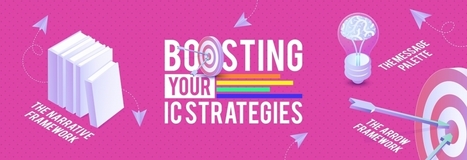


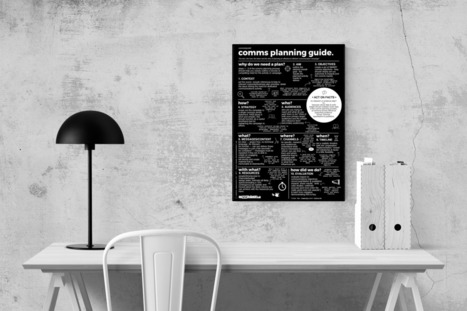



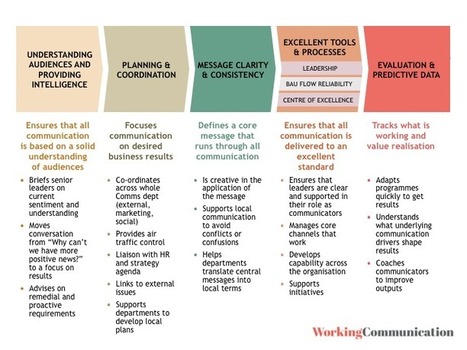





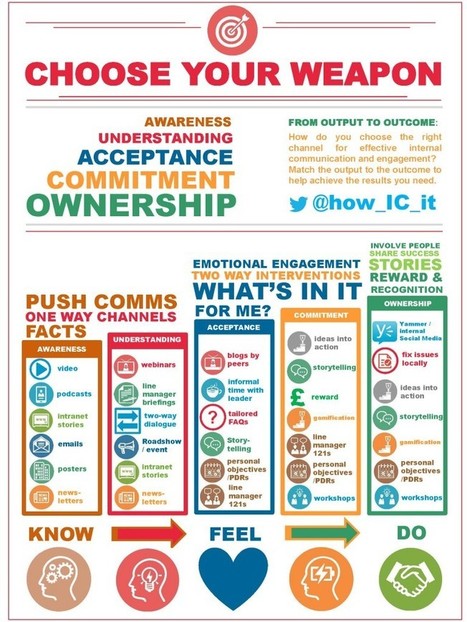




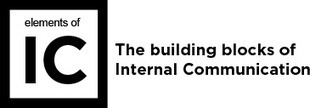


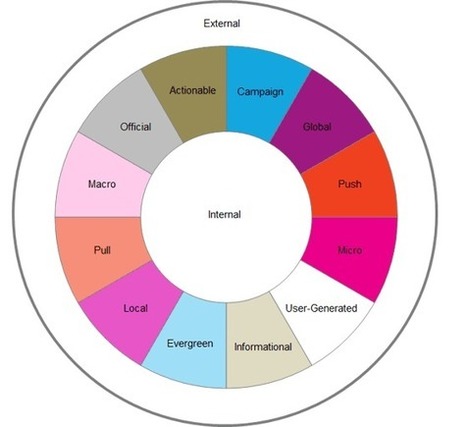










Three great options to help get you started on your strategy.